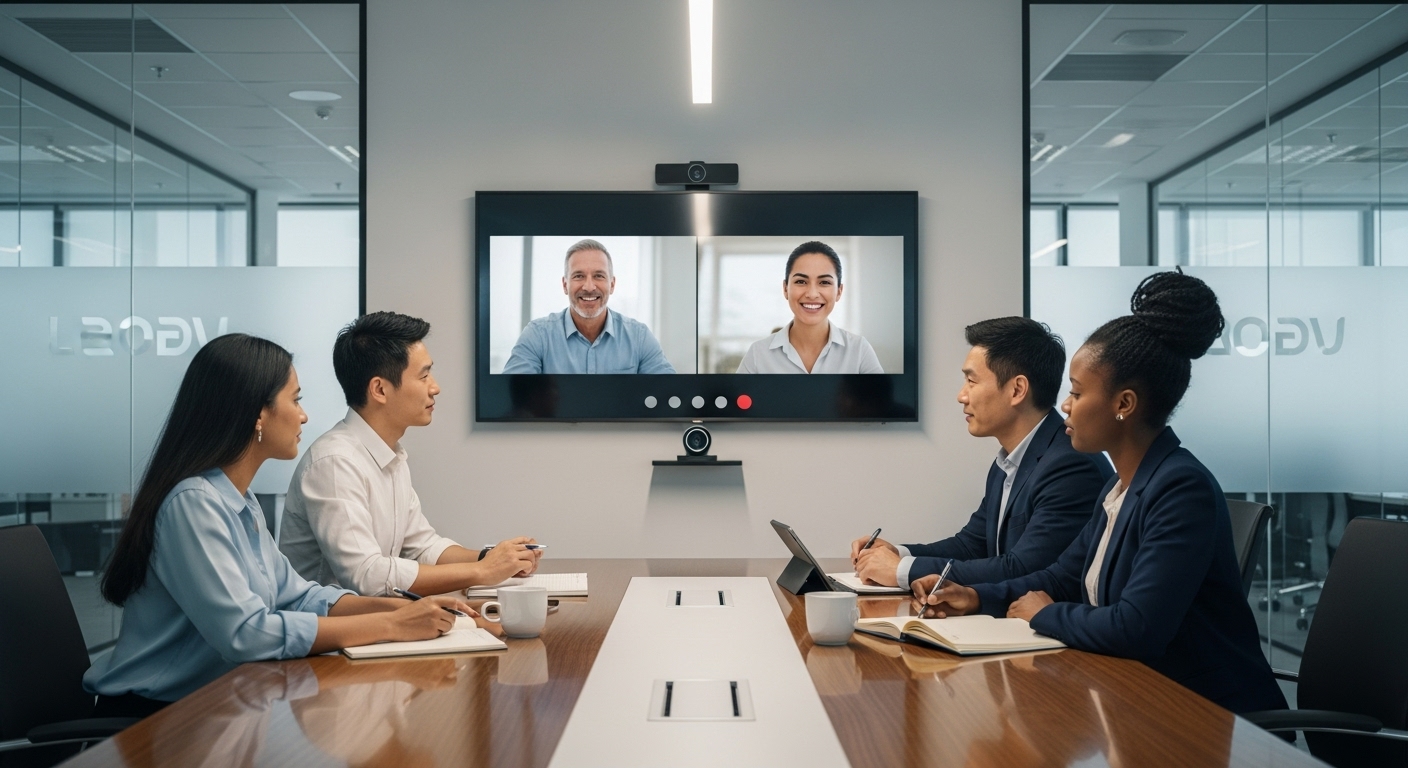The widespread adoption of hybrid work has moved beyond a temporary fix to become a permanent feature of the modern professional landscape. While employees celebrate the newfound flexibility, leaders are grappling with a complex challenge: how to build a model that is not only productive but also equitable. The initial euphoria is giving way to the stark reality of proximity bias, communication gaps, and a splintering of company culture. Search trends reveal a growing concern not just with *if* hybrid work is possible, but *how* to implement it fairly. The risk of creating a two-tiered system—where in-office employees receive preferential treatment, visibility, and opportunities—is very real. This guide addresses this critical issue head-on, introducing the ‘equity equation’ as a framework for intentionally designing a hybrid model that fosters a unified culture, combats bias, and ensures every team member has an equal opportunity to contribute and advance, regardless of their physical location. We will explore how to choose the right model, design for fairness, build a concrete policy, leverage technology, and lead with intention.
Decoding Hybrid: Choosing Your Model Before You Build Your Policy
Before a single line of a hybrid work policy is written, the foundational decision of which model to adopt must be made. This choice dictates the entire cultural and operational framework. The three primary models each carry distinct implications for equity and team dynamics. The ‘office-first’ model, where employees are expected in the office most of the time but have some flexibility, is often easiest to manage but carries the highest risk of penalizing those who need or prefer remote work. It can inadvertently recreate old office hierarchies. Conversely, the ‘remote-first’ model prioritizes remote work as the default, with the physical office serving as a collaboration hub rather than a daily requirement. This model is inherently more equitable as it forces processes and communication to be digital-first, leveling the playing field for all. However, it requires a significant investment in technology and a deliberate effort to build social cohesion. The most common approach, the ‘split-week’ model (e.g., three days in, two days out), offers a structured compromise but can be deceptively complex. The key question becomes whether the in-office days are for everyone simultaneously to maximize collaboration, or if they are flexible, which can lead to empty offices and missed connections. Choosing the right model requires a deep understanding of your team’s needs and your company’s cultural goals. A recent survey from Owl Labs found that nearly 60% of workers would prefer a hybrid model, but without a clear structure, this preference can quickly turn into confusion and resentment. The first step in solving the equity equation is to define your philosophy, choosing a model that actively supports fairness from its very architecture.
The Proximity Bias Pitfall: Designing for Equity, Not Just Presence
The single greatest threat to a healthy hybrid culture is proximity bias. This insidious tendency causes managers and colleagues to unconsciously favor employees who are physically present. It manifests in various ways: impromptu brainstorming sessions that exclude remote workers, more frequent and meaningful feedback for those in the office, and a faster track to promotions for individuals with more face-time. Research has consistently shown that this is not a hypothetical problem. For instance, a 2021 study highlighted that a majority of executives admitted to being more likely to give assignments to people they saw in person. This bias not only undermines fairness but also sabotages diversity and inclusion efforts, as caregivers or those with disabilities, who may benefit most from remote work, are disproportionately disadvantaged. To combat this, organizations must be relentlessly intentional. One powerful strategy is to structure decision-making and information-sharing asynchronously. Instead of hallway conversations making key decisions, all proposals and feedback should be documented in shared digital spaces like Notion or a Teams channel. This creates a written record and allows everyone to contribute, regardless of their time zone or location. Performance metrics must also be re-evaluated, shifting focus from visible activity to measurable outcomes and impact. As one expert puts it:
“If you can’t see who is doing the work, you have to measure the work itself. This forces a meritocracy that is often absent in traditional office settings.”
Ultimately, designing for equity means creating processes that assume not everyone is in the room, making digital presence as valid and valuable as physical presence.
Crafting Your Hybrid Work Charter: Core Principles of a Fair Policy
An abstract commitment to fairness is insufficient; it must be codified into a clear, accessible, and comprehensive hybrid work policy, or a ‘Hybrid Work Charter’. This document serves as the constitution for your new way of working, setting clear expectations and providing a single source of truth for every employee. A robust charter goes far beyond simply stating which days people can work from home. It must detail the core principles of your hybrid philosophy. A critical component is establishing clear communication norms. The charter should specify primary channels for different types of communication (e.g., Slack for quick updates, email for formal announcements, a project management tool for task-related discussions) and set expectations for response times to foster reliability without demanding constant availability. Meeting etiquette is another vital area. The policy should mandate that all meetings with even one remote participant are treated as hybrid meetings. This could include rules like all attendees joining from their own laptops (even those in the office) to create a uniform experience, or establishing a facilitator role to ensure remote voices are heard. The charter should also transparently define the ‘why’ behind in-office time. If the purpose is collaboration, the policy should state that team-wide in-office days are for specific activities like workshops or planning sessions, not for siloed work at a desk. Finally, it must outline the non-negotiables and the areas of flexibility regarding work hours, equipment provisions, and eligibility for different work arrangements, ensuring these standards are applied consistently across all departments and roles to prevent pockets of inequity from forming.
The Digital HQ: Technology’s Role in Leveling the Playing Field
In a hybrid model, technology is not just a tool; it’s the digital headquarters where culture lives, information is shared, and equity is enacted. Merely having video conferencing and instant messaging is table stakes. A truly equitable tech stack is one that democratizes access to information, opportunity, and collaboration. The cornerstone of this digital HQ is a centralized knowledge base or wiki (e.g., Confluence, Notion, or SharePoint). This platform should be the definitive source for all company processes, project documentation, and key decisions. When information is universally accessible, it dismantles the informational advantage that in-office employees might otherwise have. The second pillar is transparent project management. Tools like Asana, Trello, or Jira provide visibility into who is working on what, what the deadlines are, and how work is progressing. This transparency shifts the focus from ‘who looks busiest’ to ‘who is delivering results,’ directly combating proximity bias in task assignment and performance evaluation. Beyond these, virtual collaboration platforms are essential for bridging the physical divide. Digital whiteboards like Miro or Mural allow for dynamic, inclusive brainstorming sessions where every voice, whether in the room or across the ocean, can be represented equally on the canvas. As one CTO recently stated,
“Our goal was to create a digital environment so seamless and rich that the physical office became one of many places where work happens, not the only place that matters.”
Investing in and standardizing this digital HQ is a direct investment in fairness, ensuring that an employee’s impact is determined by the quality of their work, not the location of their desk.
Leading from Anywhere: Training Managers to Foster Hybrid Cohesion
The most thoughtfully crafted hybrid policy will fail without the buy-in and skilled execution of middle managers. They are the lynchpin of the employee experience, and leading a distributed team requires a fundamentally different skill set than managing a fully co-located one. Organizations must proactively invest in training managers to lead with equity and intention in a hybrid environment. The first critical skill is learning to manage by outcomes, not by observation. This requires training managers to set crystal-clear goals, define what success looks like for each role, and establish regular, structured check-ins focused on progress against those goals. It’s a shift from monitoring activity to measuring achievement. Secondly, managers need to be coached on facilitating inclusive meetings. This goes beyond technical proficiency with Zoom; it involves skills like actively soliciting opinions from remote participants first, using polling and chat features to engage everyone, and ensuring that post-meeting action items are documented and shared centrally. Perhaps the most nuanced skill is intentionally fostering team cohesion and psychological safety. In an office, camaraderie can build organically. In a hybrid setting, it must be manufactured. Managers should be equipped with a budget and ideas for virtual team-building activities, encouraged to start meetings with non-work check-ins, and trained to create digital ‘water cooler’ spaces, like a non-work-related Slack channel, to replicate informal social interactions. Ultimately, leadership sets the tone. When managers are trained to be fair, transparent, and intentional, they become the primary force in making the hybrid equity equation balance.
Measuring What Matters: Metrics for a Healthy Hybrid Culture
Successfully implementing a fair hybrid model is not a ‘set it and forget it’ initiative. It is a dynamic process that requires continuous monitoring, feedback, and iteration. To truly understand if your model is working, you must look beyond surface-level productivity metrics and measure the health of your hybrid culture. One of the most important datasets to track is employee engagement and satisfaction, but it’s crucial to segment this data by work arrangement. Are your remote employees reporting the same level of inclusion and connection as your in-office staff? Regular pulse surveys with targeted questions about fairness, access to information, and relationships with managers can reveal emerging gaps before they become chasms. Another critical area to analyze is career progression. Organizations must track promotion rates, high-profile project assignments, and performance ratings, comparing the data for remote, hybrid, and full-time office employees. Any significant disparity is a red flag that proximity bias is creeping into talent management decisions. Qualitative feedback is just as valuable as quantitative data. Conducting structured ‘stay interviews’ and exit interviews with specific questions about the hybrid experience can provide rich, actionable insights. The goal of this measurement is not to find a perfect, static solution. It’s to create a responsive system. By reviewing this data quarterly or semi-annually, leadership can identify what needs to be tweaked—be it communication protocols, management training, or the tech stack—to continually refine the model. This data-driven approach ensures that the commitment to equity is an ongoing practice, not just a one-time policy statement.
In conclusion, solving the hybrid work equity equation is one of the defining leadership challenges of our time. It requires a fundamental shift from assuming fairness to intentionally engineering it into every facet of the organization. True success in a hybrid model is not measured by the number of days spent in the office, but by the equality of opportunity and experience afforded to every team member. This journey begins with choosing a model that aligns with your cultural ambitions and moves to actively designing processes that mitigate proximity bias. It’s solidified through a clear and comprehensive Hybrid Work Charter that sets unambiguous expectations for communication, collaboration, and conduct. This framework is powered by a digital HQ that democratizes information and enabled by a generation of managers trained to lead with empathy and focus on outcomes. By continuously measuring what truly matters—feelings of inclusion, equitable career growth, and cultural cohesion—organizations can iterate and adapt. The future of work is not about choosing between the office and home; it’s about creating a single, unified culture that transcends physical space, ensuring that talent, not location, is what truly counts.





